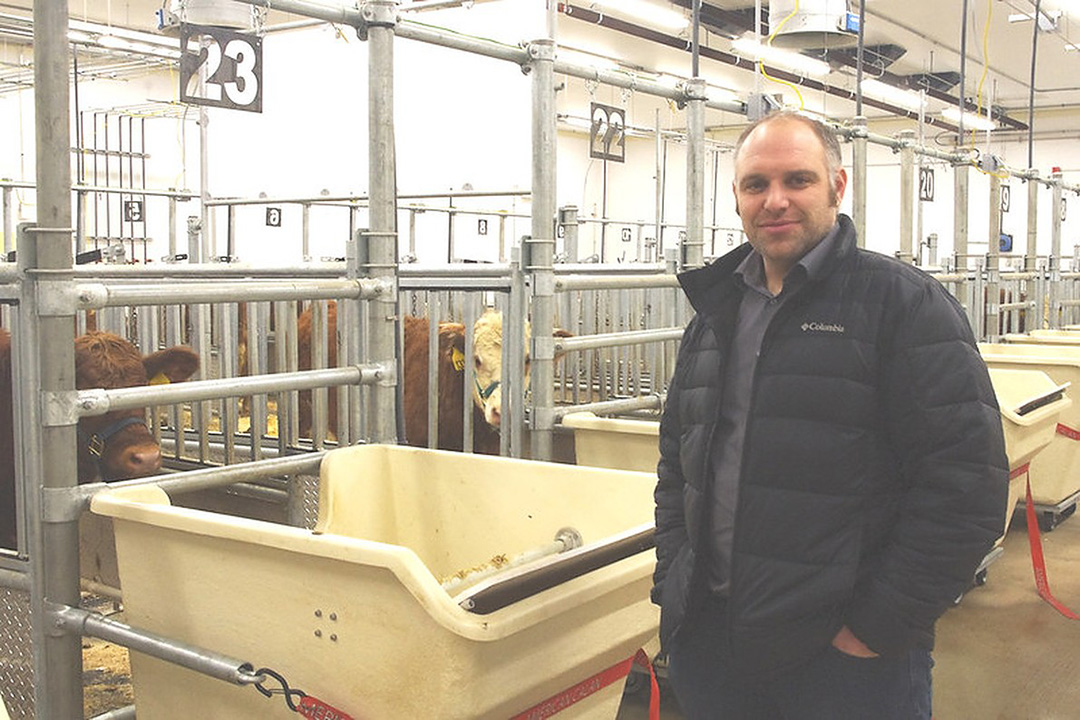
USask drinking water study shows beef cattle can tolerate high levels of sulphates
Scientists at the University of Saskatchewan (USask) have published a study that shows beef cattle can tolerate higher concentrations of sulphates in drinking water than previously believed.
“There are clear and significant implications for healthy animals from the research,” said Dr. Greg Penner (PhD), associate professor in the USask Department of Animal and Poultry Science and Centennial Enhancement Chair in Ruminant Nutritional Physiology.
National and provincial recommendations for suitable or safe levels of sulphates in drinking water range from 1,000 to 2,500 milligrams (mg) of sulphates per litre of water. But these recommendations are not science-based, something Penner and his collaborators set out to change.
According to the team’s research published this month in Applied Animal Science, beef cattle can tolerate up to 3,000 mg of added sulphates per litre of water.
During the project, the cattle drank water with 1,000, 2,000 and 3,000 mg of added sulphates per litre of water to mimic real levels experienced on some Saskatchewan cattle ranches. Regardless of these levels of added sulphates, the cattle continued to drink and eat, resulting in a normal weight gain.
At first glance, the research results seem to be good news for Saskatchewan cattle producers who have wells and dugouts containing high levels of sulphates. But Penner is cautious.
The problem is that sulphates in water potentially bind with trace minerals in a cow’s rumen, one of four stomachs, making those minerals unavailable for the body to absorb and use.
So in addition to monitoring water and feed intake and weight gain, the researchers compared blood analyses at the beginning and the end of the study. The level of copper was lower at the end of the study, potentially affecting a cow’s fertility.
“There could be longer-term effects of higher sulphate exposure in terms of reproductive efficiency,” Penner said. “A producer might not see anything negative in terms of growth rate, feed intake and water intake, but those negative impacts may be hiding deeper—higher sulphate concentrations may be affecting trace mineral status, which could affect fertility.”
The research was the first to be conducted in the highly specialized metabolism barn at the university’s Livestock and Forage Centre of Excellence, located south of Clavet, Sask.
While Penner led the study, he worked closely with collaborators from Saskatchewan’s Ministry of Agriculture—Leah Clark, the province’s livestock specialist, and Colby Elford, a livestock and feed extension specialist. University student researchers Jordan Johnson and Brittney Sutherland also worked on the project.
Funding was provided by the Saskatchewan Ministry of Agriculture and the Canadian Agriculture Partnership through the Strategic Field Program. The Roy Romanow Provincial Laboratory provided water quality analysis as an in-kind contribution.
This is the first of a series of studies that Penner will conduct into safe water quality levels for cattle.
His next project, which starts in April, is a three-year study in collaboration with researchers at Texas Tech University, USask’s animal and poultry science department, the Western College of Veterinary Medicine’s large animal clinical sciences department, and the Saskatchewan Ministry of Agriculture.
Cattle will receive water with higher sulphate concentrations than were involved in today’s published research, with the expectation that, at some point, cattle will be negatively affected by the sulphates.
However, the researchers will also test various ways of interfering with the sulphates binding with trace minerals in the rumen. For instance, bismuth subsalicylate, a commonly found antacid, is known to bind with sulfides. That in turn could diminish the effect of sulphates in water consumed by cattle, minimizing the problem before it starts.

